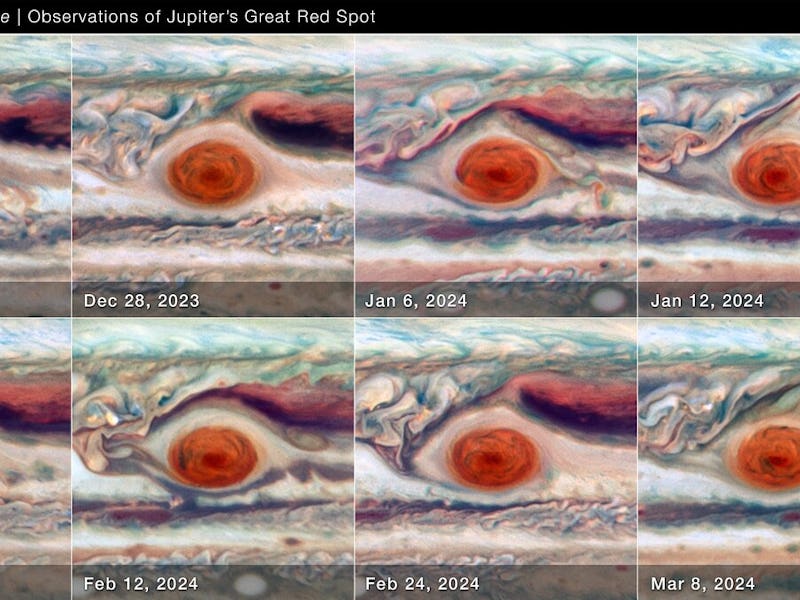Jupiter’s Great Red Spot Is Moving In a ‘Very Unexpected’ Way, Bewildering Astronomers
The Hubble Space Telescope detected a funny motion in Jupiter's Great Red Spot.

For three months, the Hubble Space Telescope stared at the famous blemish on Jupiter. What the veteran spacecraft found surprised NASA scientists.
Jupiter’s Great Red Spot (GRS) is “jiggling like a bowl of gelatin,” according to press releases from both NASA and the European Space Agency (ESA).
This unstable motion appeared to astronomers in a time-lapse movie produced from Hubble’s observations taken between December 2023 to March 2024. “With Hubble’s high resolution we can say that the GRS is definitively squeezing in and out at the same time as it moves faster and slower. That was very unexpected,” Amy Simon, project leader and senior scientist at NASA’s Goddard Space Flight Center, said in Wednesday’s statement. Nothing at present explains the Great Red Spot’s jiggles.
Jupiter’s Great Red Spot is a high-pressure, rotating vortex that has stood the test of time. The cloud tops of this storm have been seen from Earth for more than 150 years. That the storm has morphed since then isn’t a surprise. But the new behavior is.
Scientists have noticed that in the past 20 years, the Great Red Spot has decreased by quite a lot in horizontal size, the team wrote in a paper where they discuss their research.
In the time-lapse movie, Jupiter is located 740 million kilometers from the Sun. Hubble took footage using its Wide Field Camera 3, while the planet was fully illuminated by the Sun (a position in its orbit known as opposition).
Hubble’s views of Jupiter’s Great Red Spot.
The video shows how the Great Red Spot pushes against the windy jet streams that bracket it to the north and south. Mike Wong, co-investigator and planetary scientist at the University of California, Berkeley commented in Wednesday’s announcement that “it’s similar to a sandwich where the slices of bread are forced to bulge out when there’s too much filling in the middle.”
Scientists will continue to keep their eyes on this iconic storm with Hubble, through the Outer Planet Atmospheres Legacy program (OPAL) program that Simon leads. The best predictions suggest the Great Red Spot will keep shrinking and then take on a less-elongated shape that is more stable. But who knows — surprises might still be in store.